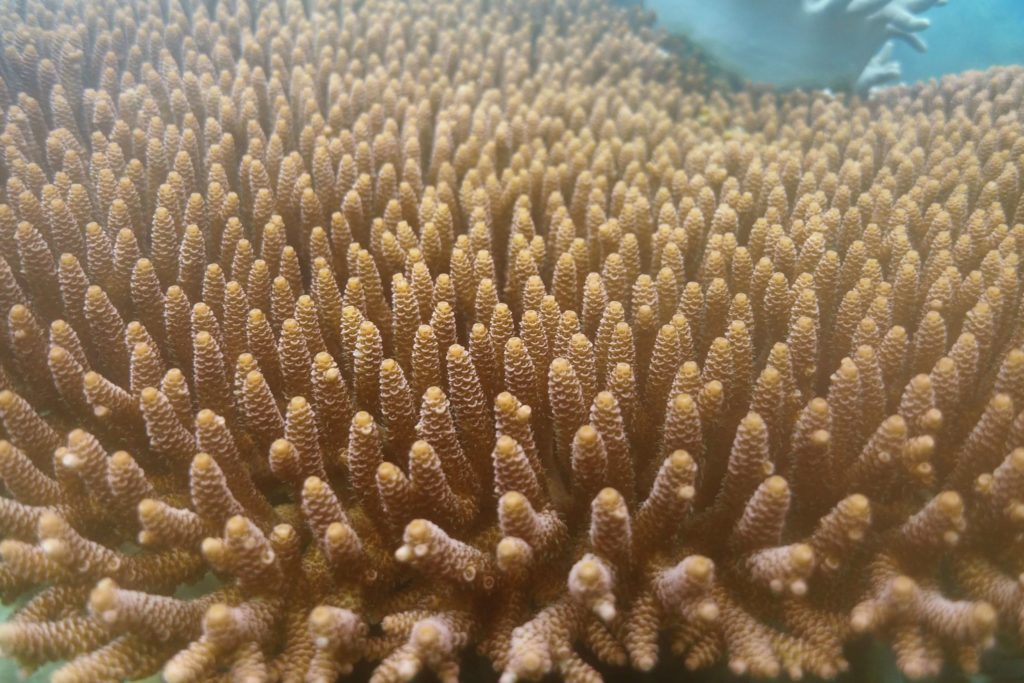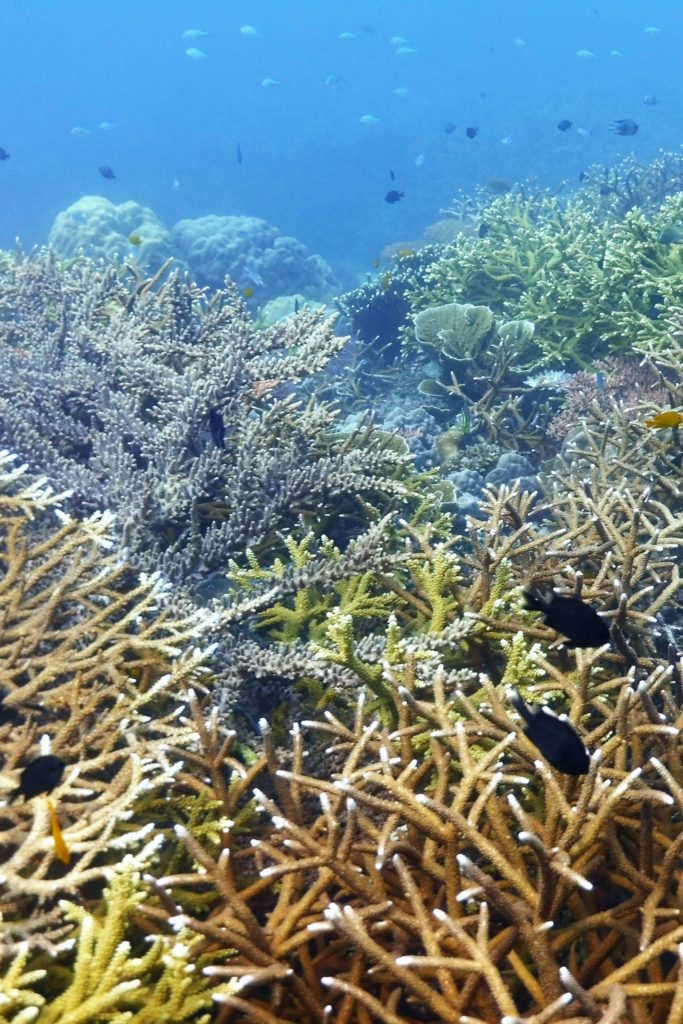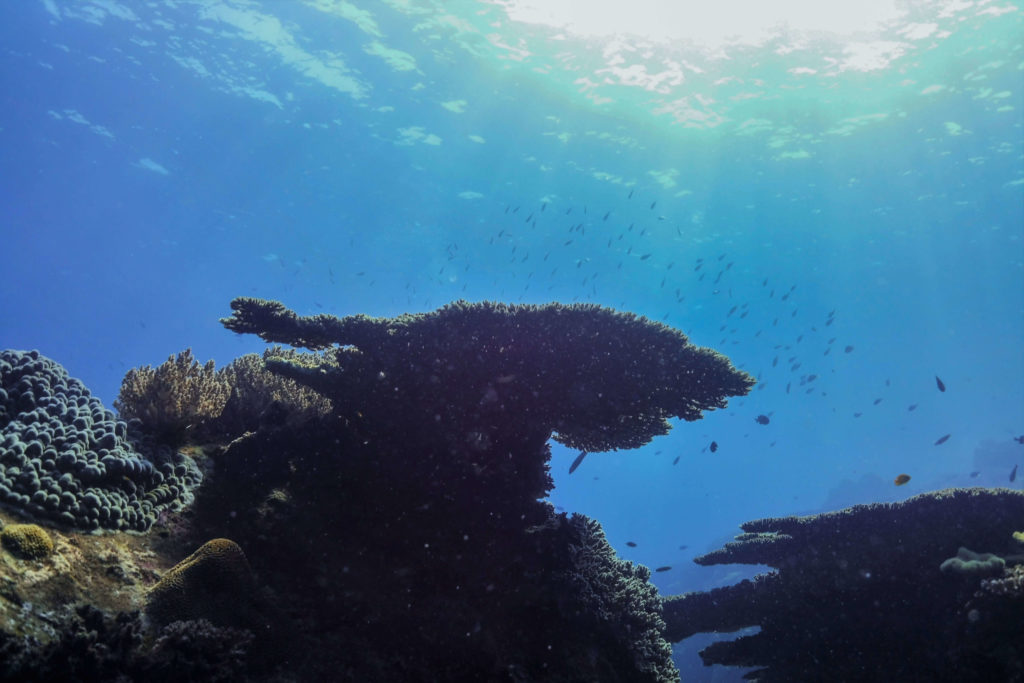Why corals matter
“Half the coral reefs are still in pretty good shape, a jeweled belt around the middle of the planet. There’s still time, but not a lot, to turn things around.”
– Dr. Sylvia A. Earle

One of the most complex animals on Earth
Corals are tiny animals called polyps, living in symbiosis with algae called the zooxanthellae.
This is a symbiotic relationship: in exchange for the nutrient produced by the algae’s photosynthesis, the polyp provides it with shelter: corals build their limeston skeleton that form coral reefs.

The cornestone of marine biodiversity
Coral reefs cover roughly 0,2% of the Ocean seafloor, but they host 25% of all marine life. Around 4.000 different fish species and 75% of all known marine species rely on their existence (NOAA).
Thanks to their complex morphology, coral reefs provide shelter and nutrients to all kind of marine species. They are often called « the rainforests of the Ocean« .
Corals are critically important for coastal communities, as 1 sq.m. of healthy coral reef produces an average of 15 tons of food per year (UNEP). But they also protect villages from floods, erosion and climatic disasters.

A vital ecosystem for carbon circulation
« Coral reefs can sequester huge amounts of carbon from dissolved carbon dioxide as carbonate. In comparison with algae and other productive aquatic organisms, corals have fairly constant structures that could survive for long times. Therefore, its contribution in alleviating the effects of greenhouse phenomenon or climate change because of high carbon emissions should not be ignored. »
Salah Mahdi Najim, University of Basrah